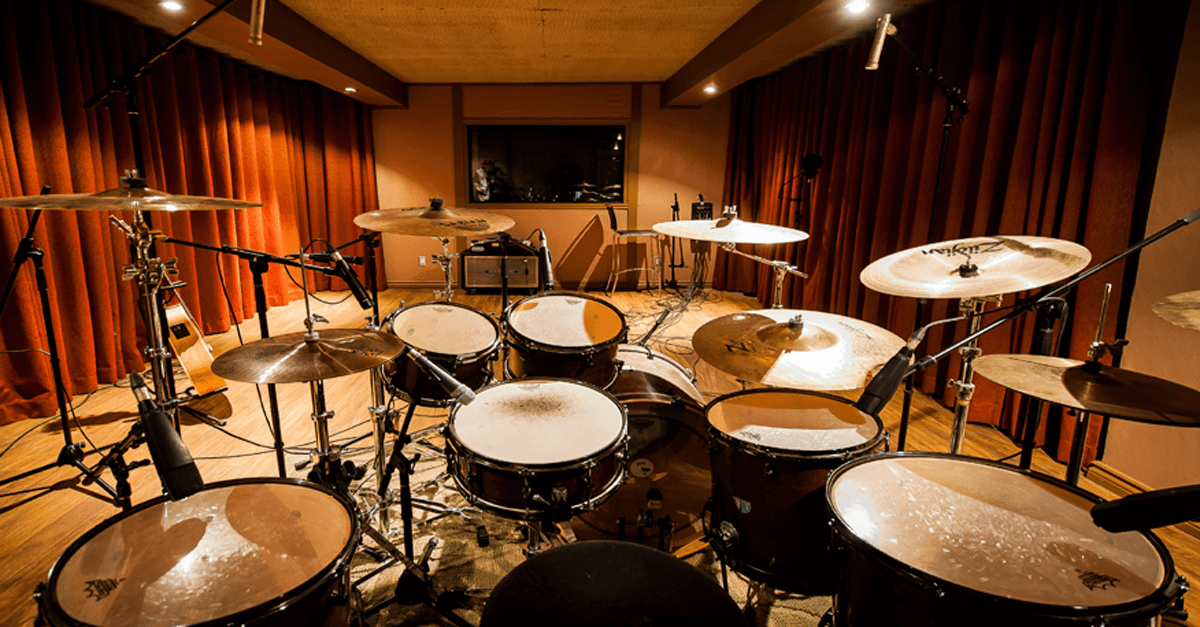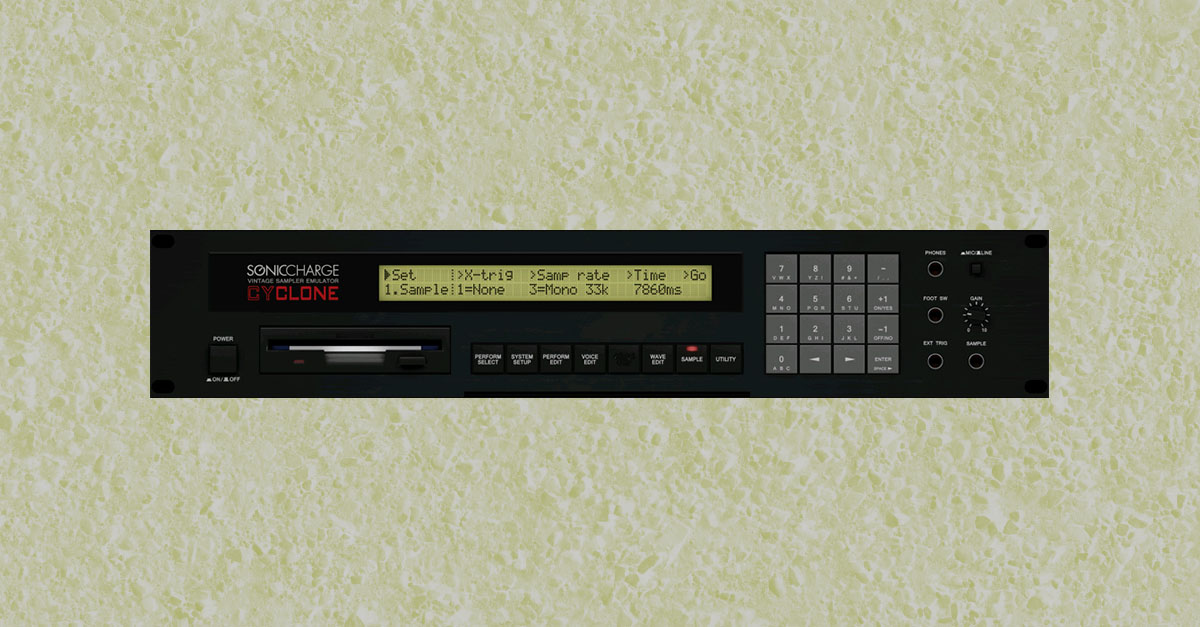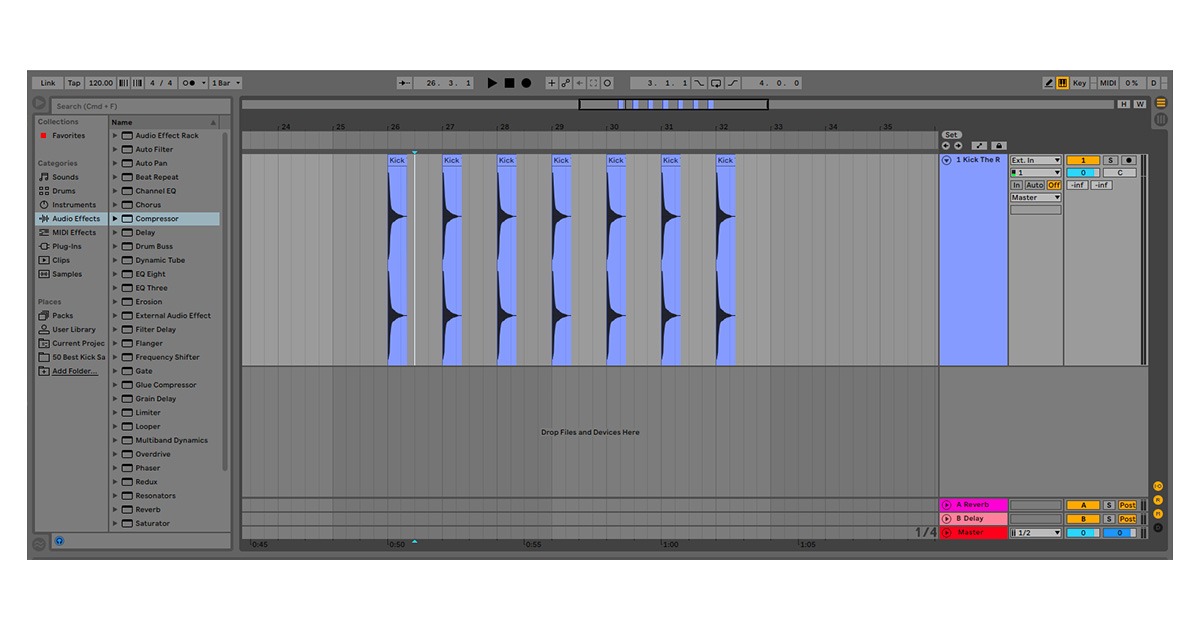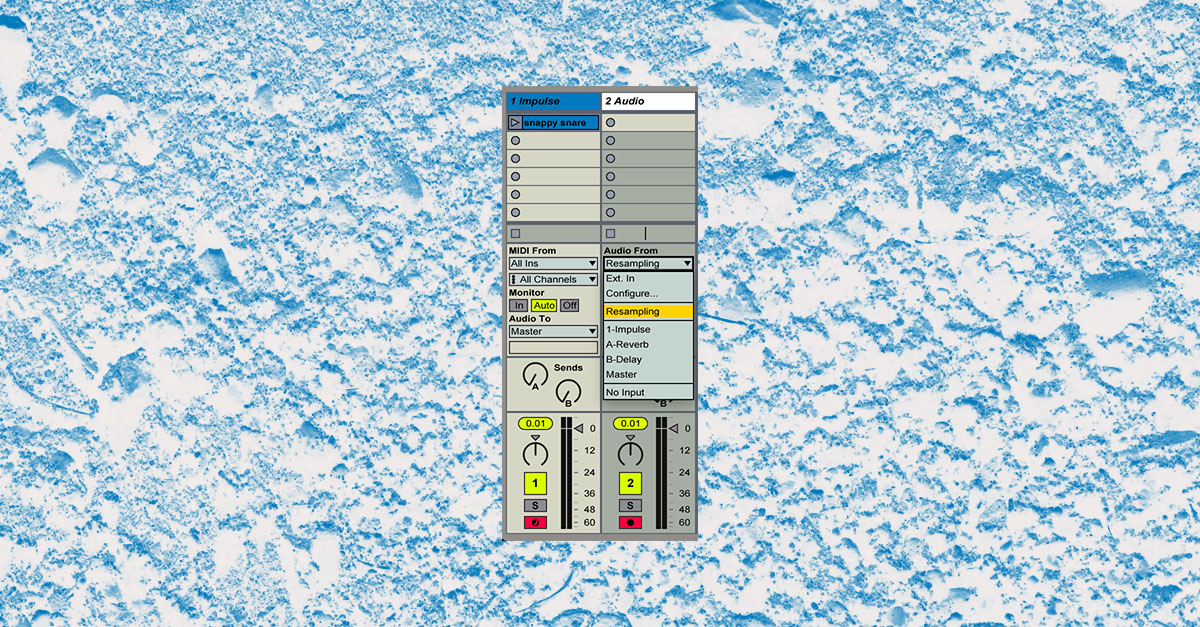So you have discovered some samples to work with. Now what?
Even when you have found the perfect sounds for your track, a little creative processing could be essential to make them sit in your mix just right.
However, when traditional mixing techniques are not cutting it you will have to try some unconventional solutions.
Here are 7 unique ways to process samples for a better mix.
1. Record them “live.”
Sometimes samples could sound too dry and “in-the-box.” One method to fix it’s by capturing the sound of the sample playing in a room with a microphone.
You could consider this method a little bit like including a subtle reverb plugin—but for real!
A real room is usually the most convincing reverb you could apply to a sound.
Simply set up a microphone in your mixing environment to capture the sound of the samples coming directly from your speakers.
Experiment with varying the angle and distance or choosing different microphone types.
The change shall be subtle however the extra weight and space from the room sound could help your samples match better into your mix.
Just be sure not to enable input monitoring on the channel you are recording or else you will get intense feedback!
2. Use vintage style sampler plugins
Vintage gear usually takes on legendary status. Today even the earliest sampler fetches high prices on the used market.
The reason is that the original samplers had a unique sound. It comes from their limited digital storage and primitive AD/DA conversion.
Samplers just like the Akai MPC 60 and Ensoniq ASR-X are sought after for their crunchy, lofi early digital quality.
You could get some of this unique character for yourself utilizing plugins which are particularly modeled to recreate the quirks of this kind of gear.
Try utilizing plugins like TAL Sampler, Sonic Charge Cyclone or 112 dB Morgana to add that great retro grittiness to your samples.
3. Try slicing functions
Many samplers and sampling plugins have built-in slicing options that could make even the most mundane samples come alive.
Common slicing functions embrace creating slices based on grid divisions or transients detected in the source sample.
Ableton’s powerful Easier sampler uses this method to allow you to play subsections of your sample with a MIDI controller.
Getting hands-on control of your chopped up samples is super inspiring.
It’s the simplest method to chop on the fly to process samples for a better mix!
4. Don’t use a sampler
This might sound counterintuitive, however, you do not need a sampler to use samples.
Samples can be utilized as basic audio files on your timeline.
You do not always need to load up a sampler plugin to use samples creatively. Sometimes simply dropping them on the timeline and manipulating them as audio is enough.
Applying fades, clip gain, reverse, automation or other audio operations directly on the timeline is a perfectly fine method to work with samples.
This way you will have your entire DAW at your disposal for mixing and processing your samples.
Sometimes it does not have to be too complicated!
5. Resample creatively
Have you managed to mangle your samples into uncharted territory with effects? It may be time to resample.
Resampling means taking your sampled sounds and…sampling them again.
It is essentially such as “bouncing” your samples down—you commit to the processing of your original sample and treat it just like the source material.
Resampling multiple times could lead you to completely alien sonic landscapes.
6. Use your sampler’s onboard LFOs
LFOs are the perfect method to get your mixes moving. In terms of sampling, they are a unique tool.
Modulating a sample’s pitch will approximate vibrato. That is super helpful for playing realistic instrument samples polyphonically.
Modulating the volume with a square wave will make a choppy tremolo. Modulating the filter will create synth-like textures.
Applying a sine LFO to the pan position will make a psychedelic auto panner impact.
See what LFO shape and routing options your sampler has—the options could be pretty inspiring.
7. Use samples as oscillators
Some wavetable synth plugins (like Ableton’s excellent Wavetable) permit you to import custom user wavetables.
This means you could use your samples because of the oscillator source in a synth! I will explain.
Instead of VCOs, wavetable synths load each individual sample in a digital file into a “cell” in a table.
A pointer scrolls through the table at different rates to produce different pitches.
wavetable synths usually used fixed wavetables that approximated waveshapes from traditional analog synthesis.
However, plugin synthesizers have expanded the chances considerably.
Now it’s simple to import user wavetables from samples from your own sessions.
Utilizing samples as wavetables could make highly unpredictable outcomes!
Trust the process
Creative processing is a key component of mixing well with samples.
The sonic content material of your samples will be so different that no single mixing technique alone will work.
Attempt these methods the next time your sampled sounds want a bit of something extra to shine. Hope you guys can process samples for a better mix!






